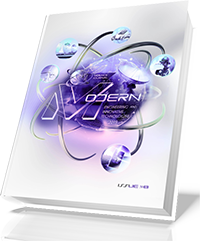OVERVIEW OF LEARNING ANALYTICS DASHBOARDS AND ELEMENTS OF GAMIFICATION IN INTELLIGENT SYSTEMS FOR SELF-REGULATED LEARNING
DOI:
https://doi.org/10.30890/2567-5273.2022-21-01-011Keywords:
self regulated learning, gamification in e-learning, learning analytics, learning analytics dashboardsAbstract
This article presents a systematic review of the research literature of the information panels of learning analytics, self-regulated learning and gamification, which report empirical results to assess the impact on learning and teaching. Also in this papeReferences
Panadero, E., Tapia, J. A., & Huertas, J. A. (2012). Rubrics and self-assessment scripts effects on self-regulation, learning and self-efficacy in secondary education. Learning and Individual Differences, 22(6), 806–813. doi:10.1016/j.lindif.2012.04.007.
Zimmerman, B. J., & Martinez-Pons, M. (1988). Construct validation of a strategy model of student self-regulated learning. Journal of Educational Psychology, 80(3), 284–290.
Lavasani, M. G., Mirhosseini, F. S., Hejazi, E., & Davoodi, M. (2011). The Effect of Self-regulation Learning Strategies Training on the Academic Motivation and Self-efficacy. Procedia - Social and Behavioral Sciences, 29, 627–632. doi:10.1016/j.sbspro.2011.11.285.
Omotosho, A., Tyoden, T., Ayegba, P., & Ayoola, J. (2019). “A Gamified Approach to Improving Student’s Participation in Farm Practice--A Case Study of Landmark University,” International Journal of Emerging Technologies in Learning (iJET), 13(05), 94–109.
Strmečki, D., Bernik, A., & Radošević, D. (2015). Gamification in e-learning: Introducing gamified design elements into e-learning systems. Journal of Computer Science, 11(12), 1108-1117.
Linked Data Driven Visual Analytics for Tracking Learners in a PLE
Martin Ebner and Behnam Taraghi. Personal Learning Environment for Higher EducationA First Prototype. In World Conference on Educational Multimedia, Hypermedia and Telecommunications, pages 11581166, 2010
Cloud technologies and learning analytics: web application for PISA results analysis and visualization Mariia S. Mazorchuk , Tetyana S. Vakulenko , Anna O. Bychko , Olena H. Kuzminska and Oleksandr V. Prokhorov
G. Siemens and D. Gašević, “Guest Editorial-Learning and Knowledge Analytics.,” Educ. Technol. Soc., vol. 15, no. 3, pp. 1–2, 2012.
P. H. Winne and A. F. Hadwin, “Studying as Self-Regulated Learning,” Metacognition Educ. theory Pract., vol. 93, pp. 277–304, 1998.
D. Gašević, S. Dawson, and G. Siemens, “Let’s not forget: Learning analytics are about learning,” TechTrends, vol. 59, no. 1, 2015.
R. Pekrun, T. Goetz, A. C. Frenzel, P. Barchfeld, and R. P. Perry, “Measuring emotions in students’ learning and performance: The Achievement Emotions Questionnaire (AEQ),” Contemp. Educ. Psychol., vol. 36, no. 1, pp. 36–48, 2011.
I. Arroyo, D. G. Cooper, W. Burleson, B. P. Woolf, K. Muldner, and R. Christopherson, “Emotion Sensors Go To School.,” in AIED, 2009, vol. 200, pp. 17–24
M. Ez-zaouia and E. Lavou, “EMODA : a Tutor Oriented Multimodal and Contextual Emotional Dashboard,” in Seventh International Learning Analytics & Knowledge Conference (LAK 2017), 2017, pp. 429–438
Furman V.D., Tarelkina M.O., Tytenko S.V. Overview of learning analytics dashboards usage in educational systems // Сталий розвиток — ХХІ століття. Дискусії 2020: колективна монографія / Національний університет “Києво-Могилянська академія” / за ред. проф. Хлобистова Є.В. — Київ, 2020. — С. 424-429 с. — Електронне видання. ISBN: 978-617-7668-22-9.
Downloads
Published
How to Cite
Issue
Section
License
Copyright (c) 2022 Authors

This work is licensed under a Creative Commons Attribution 4.0 International License.






